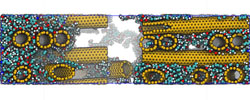World's Top Design & Manufacturing Companies Cut Engineering Simulation Times in Half Using GPU-Accelerated Abaqus FEA
Two of the largest automakers in Europe evaluated Abaqus FEA to analyze the structural behavior of large engine models. In each case their NVIDIA GPU-accelerated simulations were completed in half the time it would have taken using CPUs alone. For the automotive industry, this acceleration enables CAE engineers to perform more analyses in a given period of time, identifying issues earlier and decreasing time to market.
"Automotive customers are looking to use GPU-acceleration in Abaqus 6.11 to help them create a better product, with reduced development costs and quicker time to market," said David Watters, senior director, Manufacturing and Design Industry, NVIDIA. "This acceleration will enable them to run more design iterations and find innovative ways to reduce the weight of every component of the vehicle, increasing fuel efficiency, without sacrificing quality or safety."
In addition to the automotive industry, SIMULIA's Abaqus Unified FEA suite is addressing the needs of many other simulation-driven market segments, such as aerospace, energy, electronics, life sciences, industrial equipment and consumer goods.
NVIDIA GPUs are based on the CUDA® parallel processing architecture and can be programmed using industry-standard languages such as C, C++, and Fortran. A broad range of computing applications has been modified to take advantage of GPU acceleration. With power-efficient cores and increasingly fast access to memory, mechanical simulation software from SIMULIA enables design companies and manufacturers to use computer simulations instead of expensive prototyping to design higher quality and more efficient products.
"When addressing the industry's toughest engineering challenges, product quality and time to market are the ultimate measures of success," said Matt Dunbar, chief software architect at SIMULIA. "The acceleration available in the latest version of Abaqus demonstrates how GPUs can be used to dramatically reduce CAE simulation times which will help customers deliver higher quality products and shorten design cycles."
For more new Abaqus 6.11 features and enhancements, please go here.

